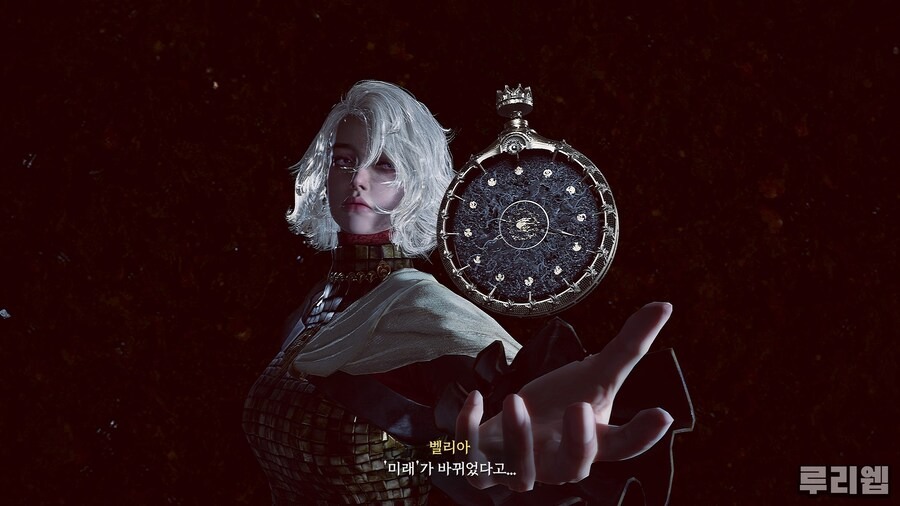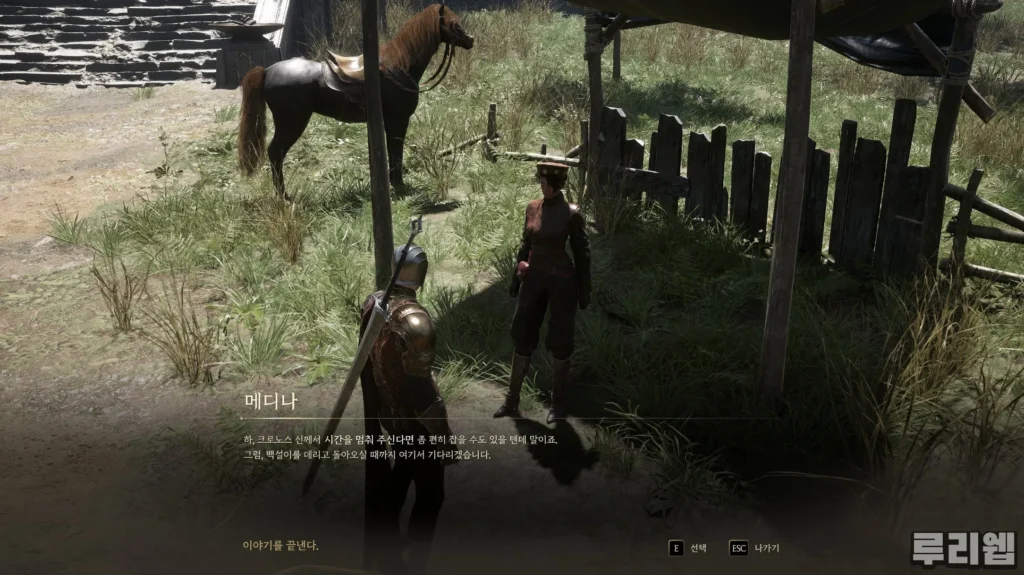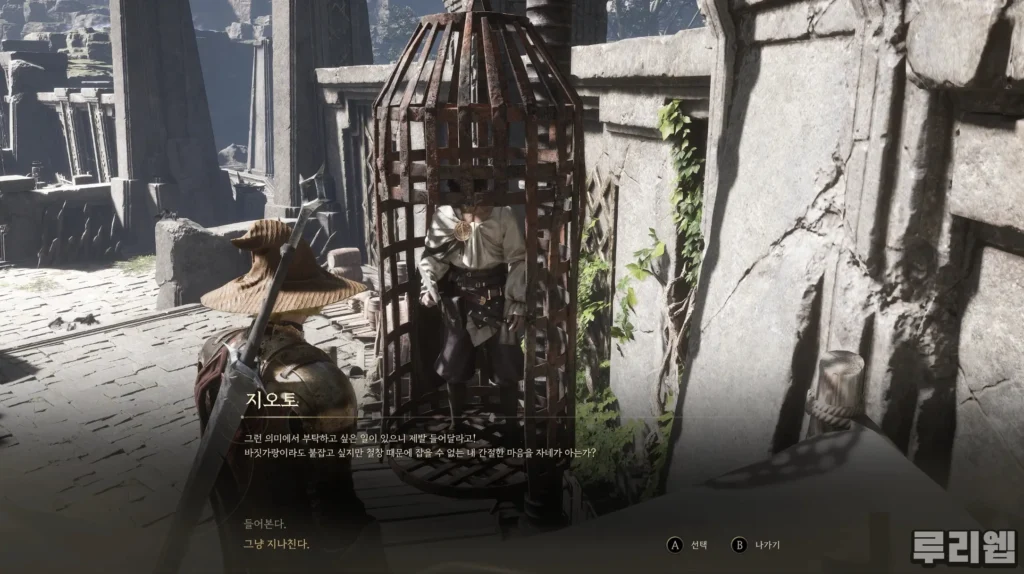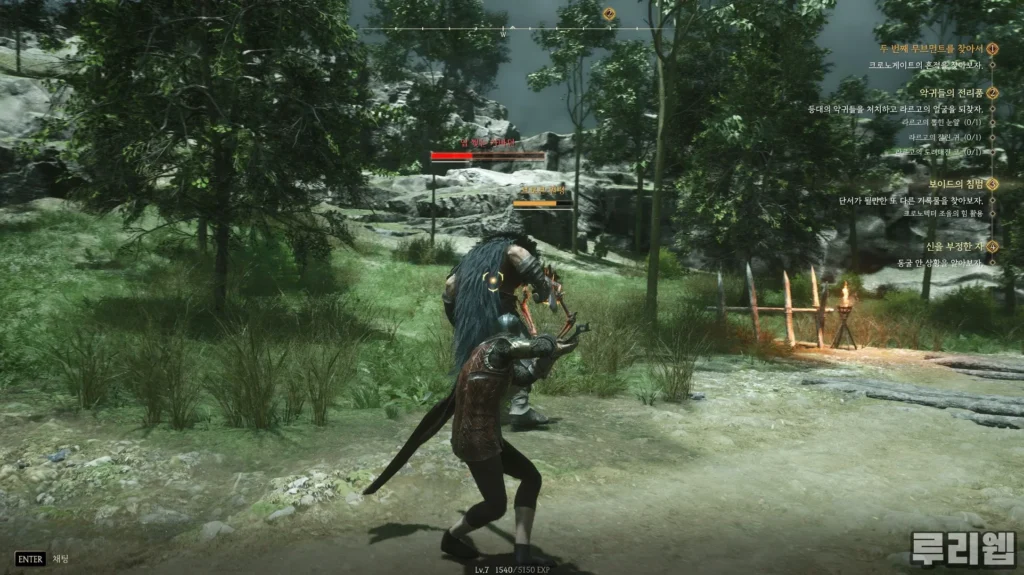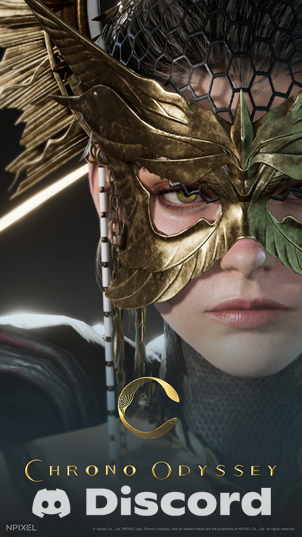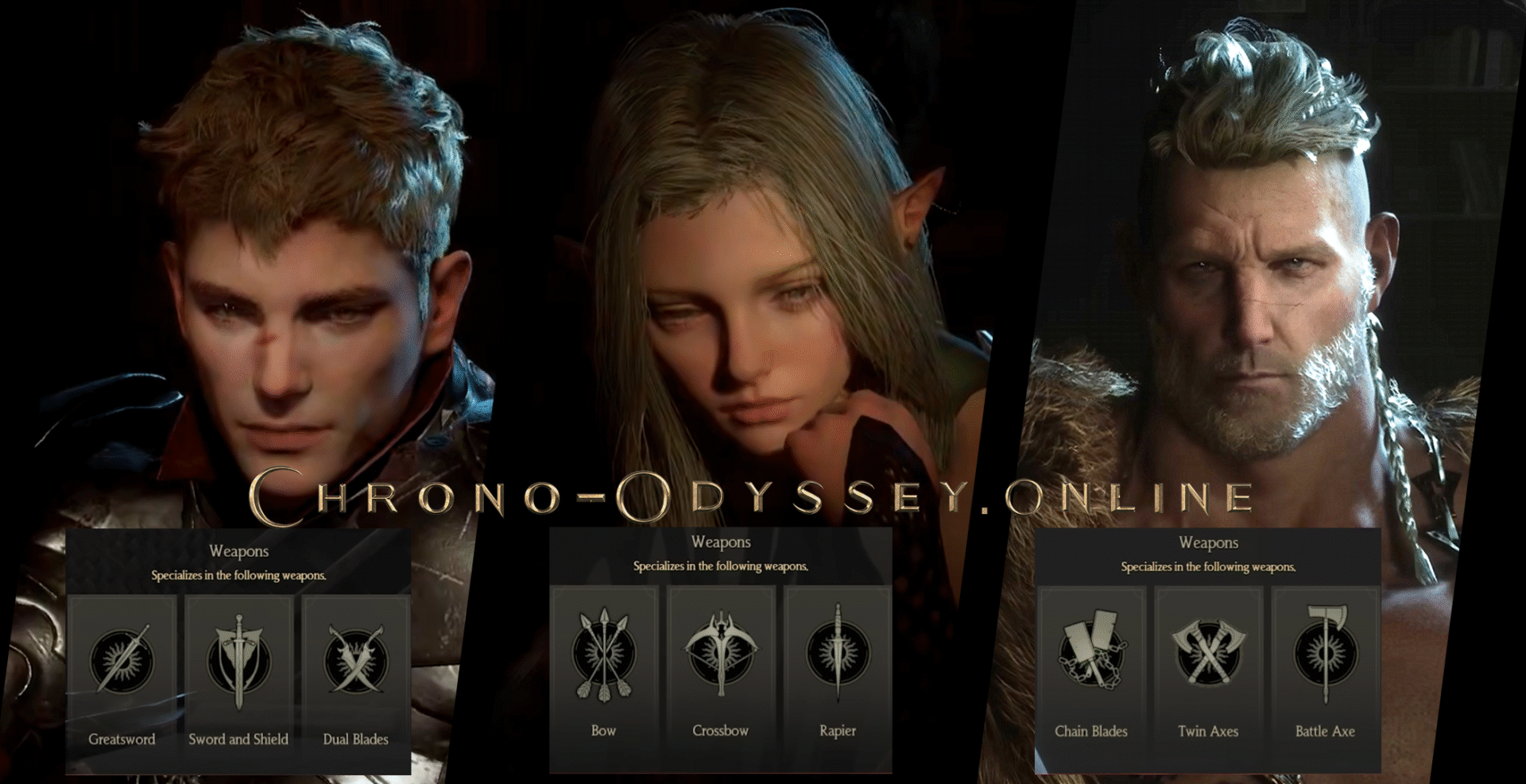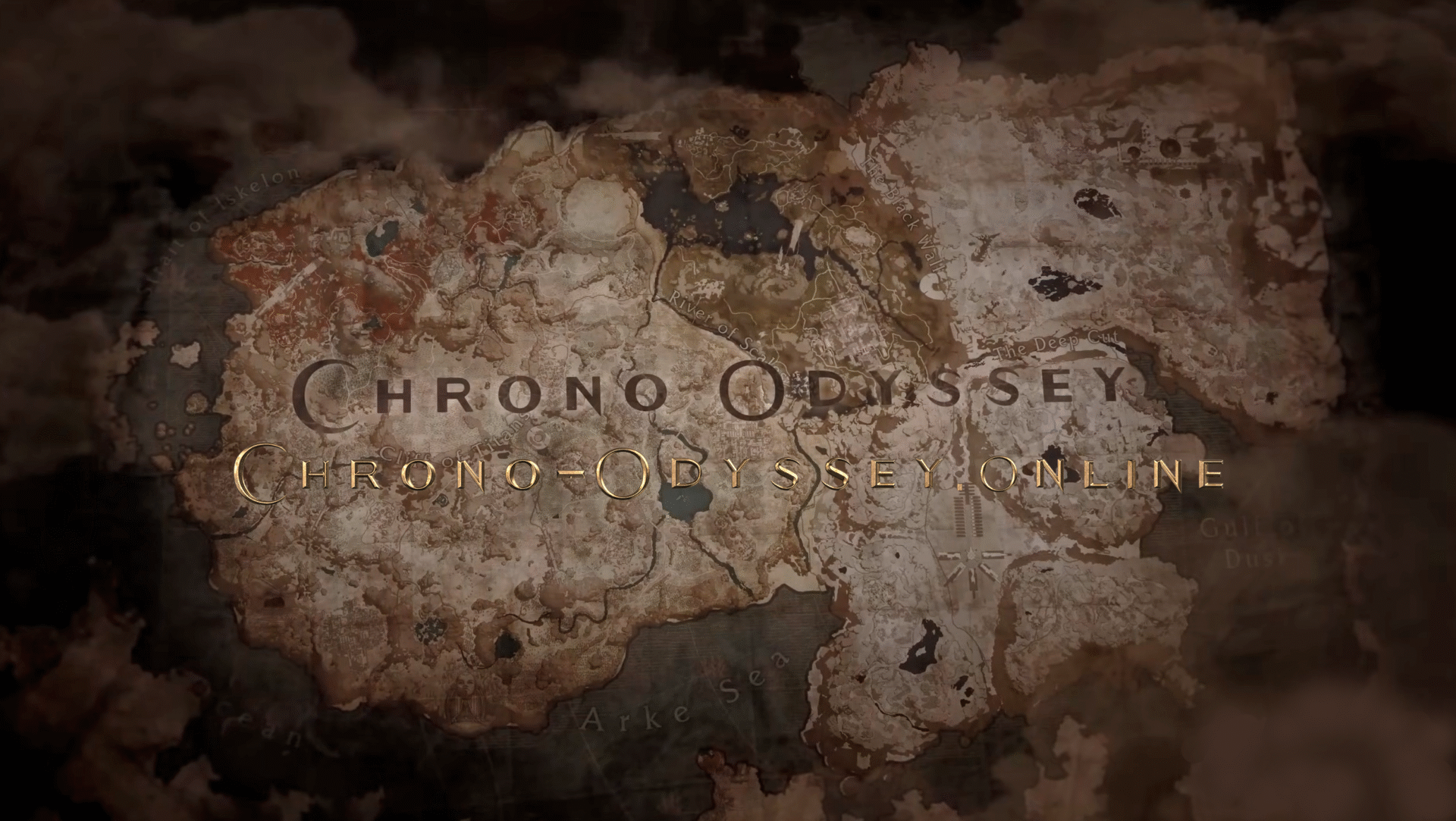Developed by Chrono Studio and published by Kakao Games, the MMORPG “Chrono Odyssey” has generated significant anticipation with each new piece of information released. Since its initial reveal, the game set out to establish itself as a next-generation MMORPG, consistently showcasing gameplay videos that highlight its impressive visual quality.
Chrono Odyssey Interactive Map
Nearly five years after its initial reveal, Kakao Games is hosting a global closed beta test for Chrono Odyssey. The test will take place from June 20 to 23 via Steam. During this period, players will be able to explore the game’s starting area, which plays a crucial role in shaping the first impression, as well as the early gameplay zone.
What does Chrono Odyssey look like now that it’s been revealed to the public? Some insights can be gathered from previously released gameplay videos and developer interviews. In these, the developers outlined three core pillars they aim to achieve with the game.
💖 Enjoying our content? Please consider supporting us by disabling your adblocker.
Ads help us keep the site running and bring you the latest news, guides, and updates. 📰
✨ Don’t worry — they’re well-placed and won’t interrupt your reading. Thanks for your support! 🙌
The first is a player-driven sense of adventure and exploration; the second focuses on the overall combat system; and the third centers around challenging content, both solo and group-based. These three pillars are clearly present in this test build of Chrono Odyssey. As a result, the game shows both strengths and weaknesses. On one hand, it’s undeniably captivating—but on the other, certain elements still require further development.
Player-Driven Quests? – No Hints, No Reward Indicators
When it comes to player-driven adventure and exploration, Chrono Odyssey minimizes quest markers, navigation aids, and descriptive text, placing the burden of initiative on the player. This approach is the complete opposite of what most MMORPGs traditionally offer.
Instead of directing the player’s path, quests in Chrono Odyssey offer only vague descriptions and objectives, leaving players to uncover clues through NPC dialogue and exploration. In that sense, while the game technically includes quests, it doesn’t use them to guide progression.
That said, not all missions follow this format. Local quests—side missions—do mark general completion areas on the map. However, solving the objectives still requires the player to figure things out independently.
Most quests don’t provide a clear path to follow.
Let’s take a quest to obtain a horse as an example. When the player accepts it, there’s not much they can do at first. Finding the horse requires more steps than expected, but they’re not clearly explained. To calm the horse, you need to use the time-stopping ability—something only hinted at in an NPC’s dialogue: “If Cronos were to stop time…”
This ability, however, can only be unlocked after defeating one of the main bosses available during the test. In other words, players need to progress significantly after accepting the quest in order to complete it properly. This design limits the clues available and relies on the player picking up specific details through NPC interactions.
The main quest is a bit more complex.
At first, it gives you a general sense of where to go and guides you to a certain extent, but the process for defeating the third and fourth bosses is entirely different. At a certain point, the main storyline shifts and gives you a new objective: “Find clues and defeat the Apostle (boss).” It’s up to the player to figure out exactly how to achieve that.
Clues can be uncovered in a variety of ways. Some NPCs display quest-related markers above their heads, and the quest structure is designed so that players can naturally discover the boss while progressing through the mission. However, the game doesn’t clearly outline what to do next—you’ll often need to double-check your objectives and make sure you haven’t missed anything.
Discovering the correct path through this process feels truly rewarding.
The general flow of the quest appears to be designed to naturally guide players toward the main storyline. In this case, the quest unfolds as follows: you hear from a captain NPC at an outpost that they’ve lost contact with a subordinate — then, using your own skills, you track down the missing NPC. Once found, the subordinate mentions, “There’s a monster underground at that location.”
However, when I arrived, there was no obvious entrance to go underground. The area looked completely empty. After searching around for a while, I discovered a lever next to a pillar and pulled it.
Suddenly, the ground opened up, revealing a hidden underground path. This led to an area where the Apostle—the hidden main quest boss—was waiting. What began as a simple side quest evolved into a main story encounter, offering an unexpected and memorable adventure.
A trace-tracking mechanic typically found in action-adventure games.
However, this structure also divides opinions sharply. In some ways, it can feel outdated or even out of place in a modern MMORPG. If players don’t pay close attention to the dialogue, they might miss key details, and progression can become impossible without certain abilities. For those who enjoy piecing things together, it may feel rewarding—but for most, the lack of clear clues makes it difficult to navigate the game through inference alone.
Chrono Odyssey also avoids traditional mission structures where players simply follow quest markers. Instead, sudden side quests can trigger near specific objects like corpses or broken carts, offering minor rewards. Players may also be prompted to enter time-based dungeons, defeat specific monsters, or even rewind time. Occasionally, a voice crying for help or a shout from an NPC will lead to the next step in a mission.
Sometimes, a distant cry can trigger a quest.
While that sounds immersive, this design somewhat undermines the idea of a “player-driven adventure.” Quests aren’t mandatory, and their rewards are rarely meaningful for progression. Since they’re automatically added to the quest log without player input, it feels more like content being pushed onto the player rather than discovered organically. While it’s intriguing that quests can continue from NPC screams or subtle clues, the way they’re triggered often feels forced or repetitive.
Judging by the design intent, it seems the developers wanted to give players a sense of choice. However, the quest UI doesn’t show potential rewards, required character levels, or recommended gear ratings. Ultimately, unless players decide to take on the quest themselves, there’s no way to know what to expect. The journey might be interesting for some, but it’s unclear how many will have the patience—or understanding—to see it through.
The open field is also built around this philosophy. While it’s difficult to confirm due to forced access limitations in the early zones, Chrono Odyssey seems to populate each area with monsters of similar strength. In other words, enemies encountered at the beginning of the main storyline aren’t dramatically weaker than those found later on. The difference in power exists, but it’s relatively minor.
Where traditional MMORPGs gradually introduce higher-level enemies across new zones—creating a clear path of progression—Chrono Odyssey assumes players will wander freely. As a result, enemy difficulty across regions remains largely consistent. To find truly powerful foes, players need to seek out massive field bosses or venture into entirely different zones.

As previously showcased in videos and other developer materials, the Chrono Tector system has limited practical use in the field. Functionally, it offers five core abilities: tracking clues, freezing time for nearby monsters, summoning the spirit of a defeated boss to assist in combat, rewinding time to reposition the player ten seconds prior, and reducing fall damage while enabling brief gliding.
Among these, only the tracking feature is meaningfully used for quest progression. Other abilities—like rewinding time or activating frozen objects—were not available during the beta and may appear in future zones. As it stands, Chrono-related mechanics felt more like conceptual features than fully integrated gameplay elements during the test.
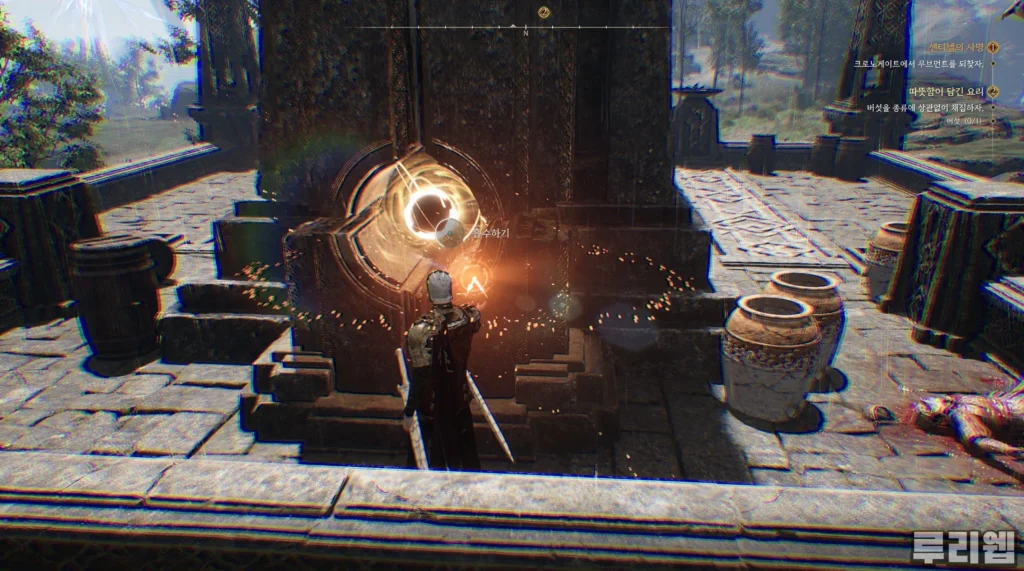
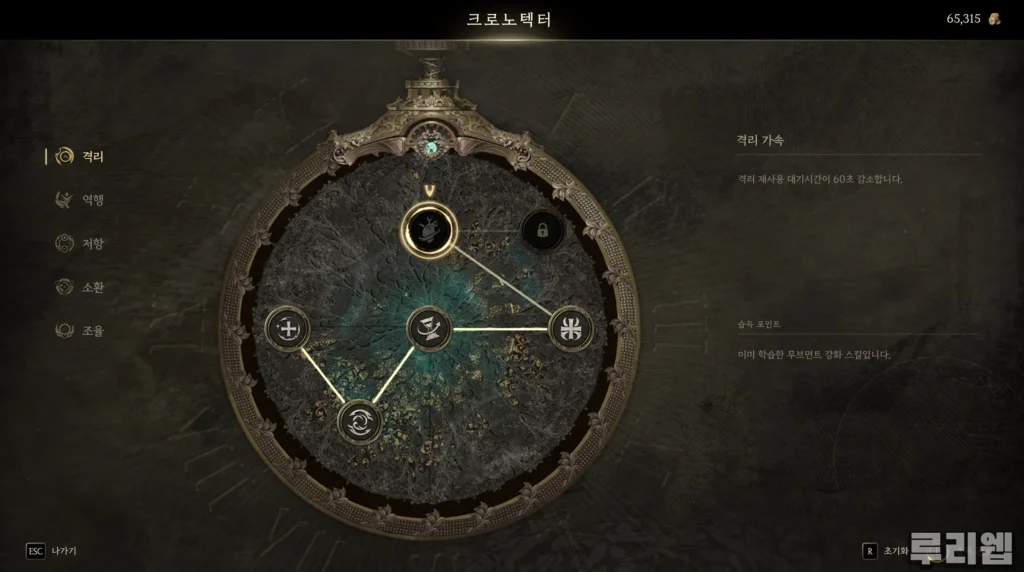
Side quests, or local missions, are more common than you might expect—but ultimately, they lack real impact. While they aren’t part of the main quest flow, they often appear in the quest log automatically, prompting players to complete them out of habit rather than interest. The overall number of these quests is also fairly limited.
Instead, the world is filled with spontaneous personal or group missions that trigger randomly in the field. These “surprise quests” reset and repeat based on monster respawn timers, making them feel more like filler content than genuine player-driven adventures.
While the intention may have been to create moments of unexpected discovery—where players stumble upon a quest, solve a puzzle, and continue forward—the execution falls short. Key design elements are missing, leading to what feels like a lack or even a complete absence of coherent level design. This will be explored in more detail in the following section about player progression.
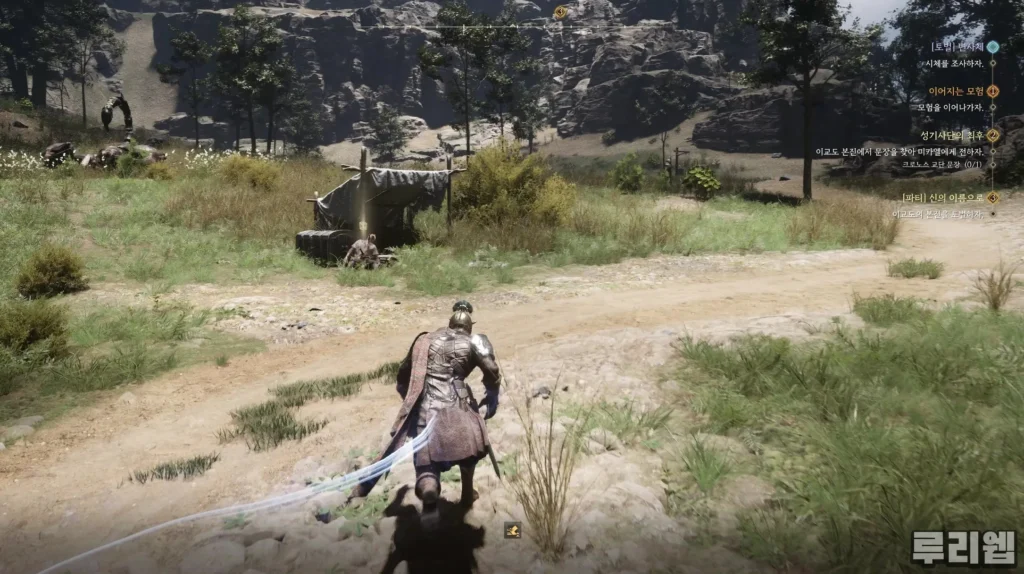
Tension and Fatigue in Souls-like Combat
Chrono Odyssey’s overall combat system draws heavily from the values established by Souls-like gameplay. At its core, it’s about delivering the kind of tense, high-stakes action that offers catharsis when overcoming a tough enemy. With that philosophy in mind, the game’s combat establishes a clear identity.
Combat is structured around several key systems: dual weapon usage, standard attacks, special actions (like guard or charge), evasion, skill use, buff abilities, and the use of “Chronoact” powers. The dual-weapon mechanic is particularly satisfying—each character selects two weapons out of a set of three and switches between them dynamically during battle.
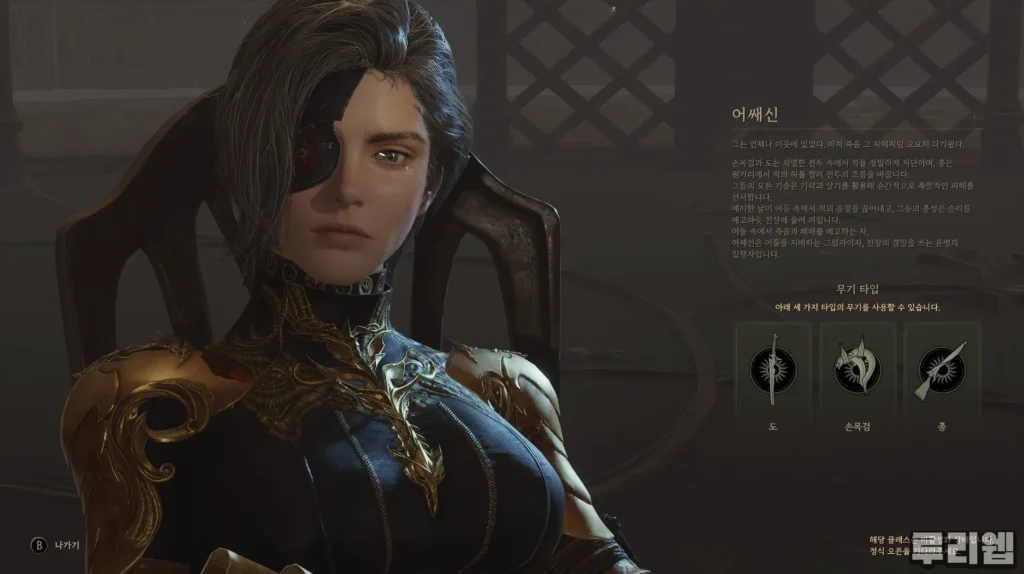
Character level and weapon proficiency are tracked separately. Weapon proficiency increases through repeated use, and as it levels up, players earn points that can be invested in a skill tree to unlock new abilities. A maximum of four active skills can be equipped at any given time, a limitation likely designed with gamepad users in mind.
One particularly notable feature is the surprisingly long skill cooldowns. Abilities typically have cooldowns ranging from 30 seconds to over a minute, and some also require additional resources to activate. For an action-oriented combat system, these lengthy cooldowns can feel restrictive. However, the game offsets this by offering passive skills that reduce cooldown times.
For example, dual blades have a passive ability that shortens cooldowns when the player successfully performs a special guard action (mapped to the right trigger on a gamepad). This dynamic allows players to significantly alter their combat style through weapon choice and skill tree investment. Since each weapon’s cooldowns are handled independently, players are encouraged—almost required—to switch weapons frequently and alternate between abilities in battle.
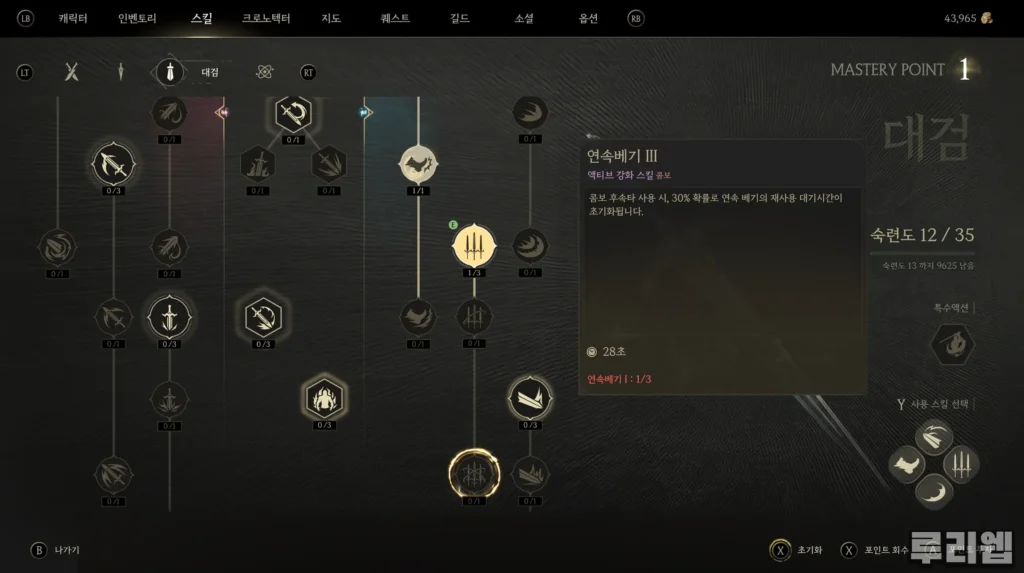
Overall, the combat can be described as challenging. Simply put, players take a lot of damage while dealing relatively little in return. At around level 15, regular field monsters inflict between 130 to 300 damage per hit, while the player’s health sits in the high 1800s—meaning you can die in roughly 10 hits. Because of this, the core strategy revolves around reading enemy patterns and carefully responding with guards, parries (available only with sword and shield), or evasive maneuvers.
This creates a notable level of tension. Until your character is sufficiently leveled or equipped, it’s nearly impossible to take down enemies quickly. Battles require heightened focus, especially when facing bosses. Boss enemies are significantly tougher, dealing more damage and boasting much larger health pools than regular monsters. Their large size makes them easier to visually track and avoid, but server latency and hitbox inconsistencies can turn even a straightforward fight into a frustrating ordeal.
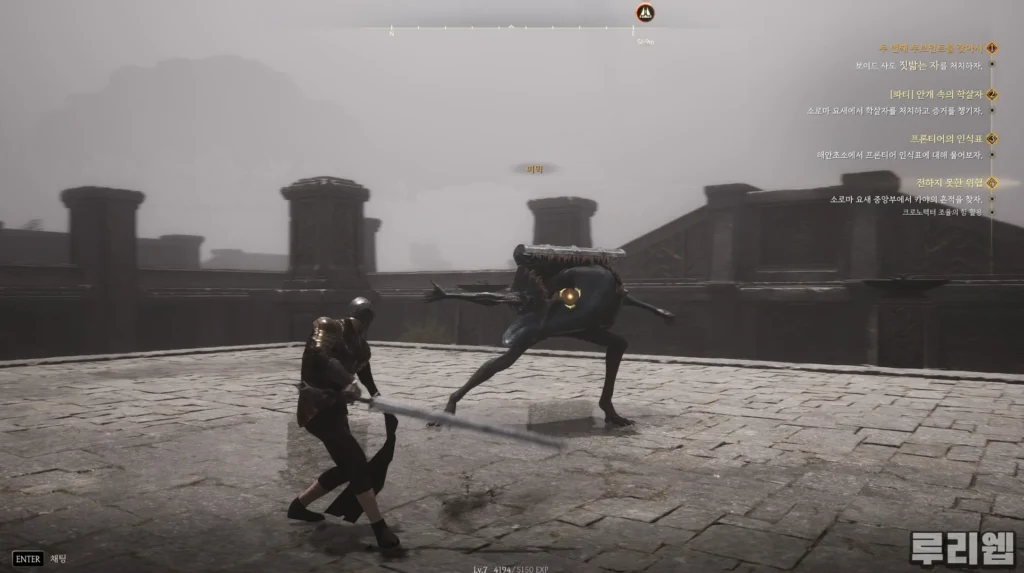
Additionally, the one-minute cooldown on healing potions is another hurdle. While the combat takes inspiration from Souls-like games, potion mechanics are firmly rooted in traditional MMO design. Potions must be either purchased from shops or crafted, and once they run out, a player’s survivability drops drastically.
In this beta test of Chrono Odyssey, combat is primarily designed to take place in open fields. While there is a group dungeon available, it has high entry requirements and demands a significant time investment to reach. As a result, the true sense of catharsis comes from either teaming up with other players to take down massive field monsters or pushing through solo battles to overcome overwhelming odds.
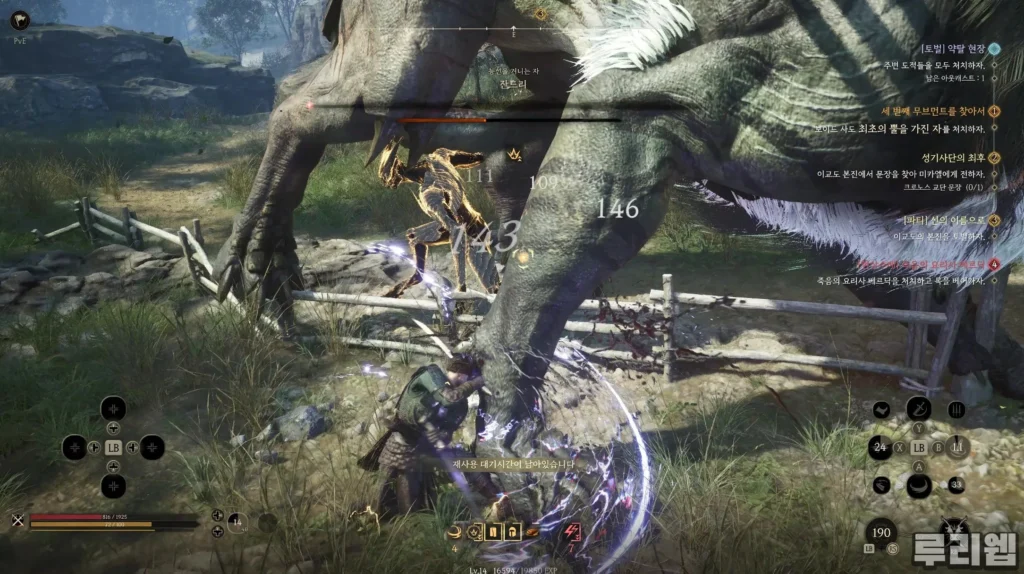
The gameplay in Chrono Odyssey centers around a fast-paced, intense combat system. While attack styles may vary depending on the class or weapon chosen, the core mechanics focus on wielding weapons that deliver powerful and swift strikes. During non-targeted battles, players seamlessly combine quick, slow, and heavy attacks, creating a distinctive and dynamic combat rhythm.
In summary, the tension and excitement characteristic of Soul-ryu battles have been effectively adapted into an MMO environment. The game’s dark, eerie atmosphere and striking graphics further enhance this unique experience. However, since the action unfolds within an MMO setting, gameplay quality can fluctuate based on server conditions. Achieving the precise hitbox accuracy crucial to Soul-ryu battles remains challenging in this environment.
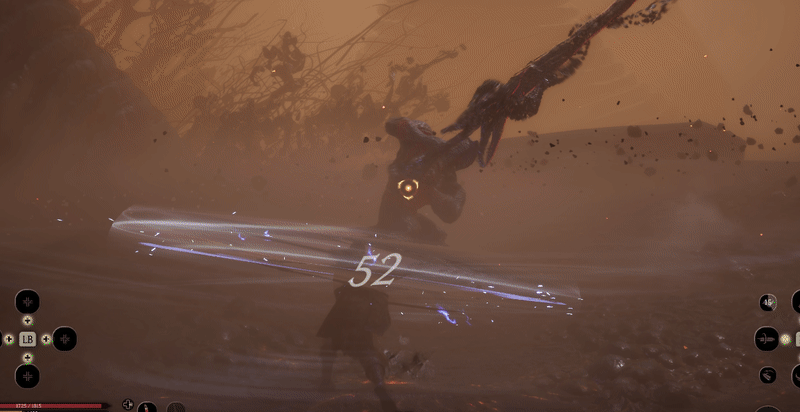
At least the experience of defeating a giant monster alongside other players is truly special. Even if you die, teammates can continue battling the monster and hold their ground until you respawn. Additionally, enemies that appear during certain events may not regenerate lost health even when no players are nearby. Since the focus is on the thrill of fighting massive monsters, the game faithfully incorporates items and content designed to support this style of gameplay.
However, Chrono Odyssey delivers a mix of positive and negative experiences. This raises a crucial question: “How does the game intend to utilize combat clearly inspired by Souls-like mechanics?” Unfortunately, Chrono Odyssey seems unable to provide a definitive answer. Simply put, it feels like “only the combat is Souls-like.” This results in a somewhat disappointing experience when combined with the MMORPG elements described later.

A typical example is the boss battle around level 5, following the initial tutorial section and subsequent progression. The gameplay also showcases combat experiences on the battlefield. The initial boss fight experience is closely tied to the level design.
The main quest at around level 5 aims to push players toward the first Apostle with minimal preparation and unlock the “Chronotact.” This is where the problem arises. Before players have a chance to properly develop their characters, they are immediately thrust into a boss fight—where dying at least once becomes inevitable.
The real issue comes with the progression afterward. Once defeated, instead of being guided to explore a new area or complete another quest, players are sent back to the dungeon entrance. At this point, you might think, “Wait, do I have to beat this to move forward?” However, lacking weapons and gear, combined with the challenges of online play affected by server conditions, forces players into unwinnable battles. This continues until all consumable potions are depleted, and there’s no way to recover health.
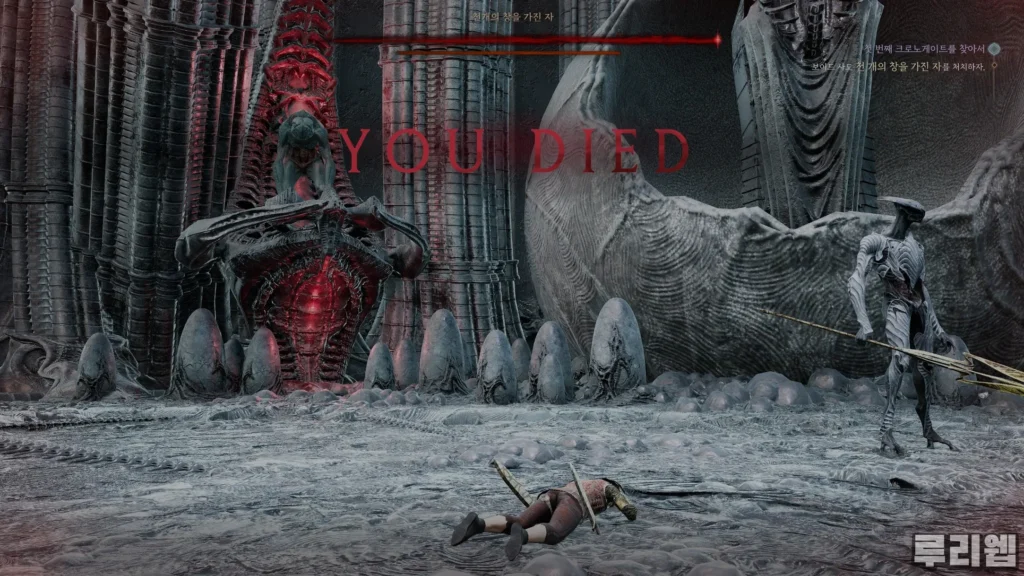
Chrono Odyssey features fast-paced, intense battles that are unfortunately heavily impacted by server issues. This became evident during the media test phase, which involved a limited number of players. Despite the relatively small player base, numerous problems arose during the early days of the launch due to server instability. Players experienced strange hit detection and situations where damage failed to register even when attacks connected.
As a result, the combat feels contradictory—while the design aims to deliver an enjoyable and engaging experience, the actual gameplay environment falls short. Since everything must be processed and synchronized in an online setting, monster behavior patterns are implemented indirectly, causing them to move with unusual slowness and awkwardness. Yet, given the high attack power, player errors carry significant risk.
The combination of high stakes and lengthy battles inevitably leads to player fatigue. Similar to Souls-like boss fights, each encounter demands intense focus and caution to avoid death, making the experience highly rewarding. However, player opinions will vary widely on this aspect—while some find it immersive, many are held back by the frustration caused by ongoing server problems.
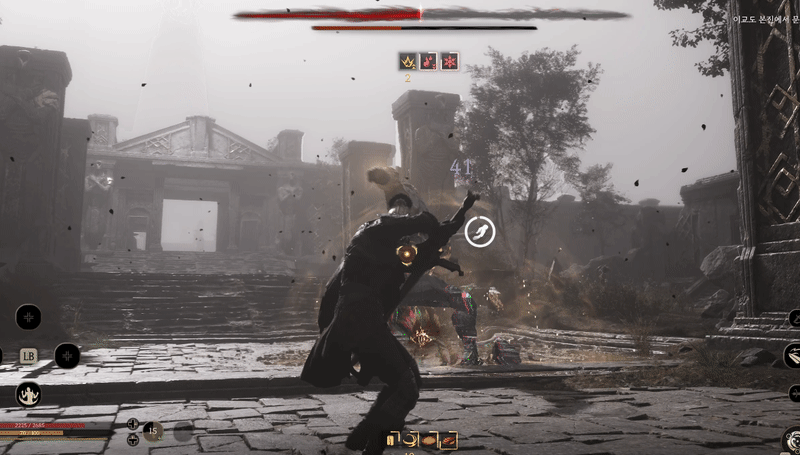
However, the latency issues experienced in open battlefield areas are somewhat improved in the separately designed dungeon zones. Still, several visual problems stand out, resulting in awkward gameplay. A notable example is the camera handling in tight spaces.
Additionally, the dungeon’s internal layout and visual presentation contribute to player fatigue. While a detailed explanation would be lengthy, it’s enough to say that the overall results are less than ideal.
The dungeon, accessible around level 15, is enjoyable to play despite the fatigue from prolonged battles. It’s filled with powerful bosses and high-health enemies, making the experience of overcoming them with a group both rewarding and engaging. The dungeon also features shortcuts connecting to respawn points, as well as interesting elements like strategizing how to avoid hidden named monsters or endlessly respawning zombies lurking in the dark.
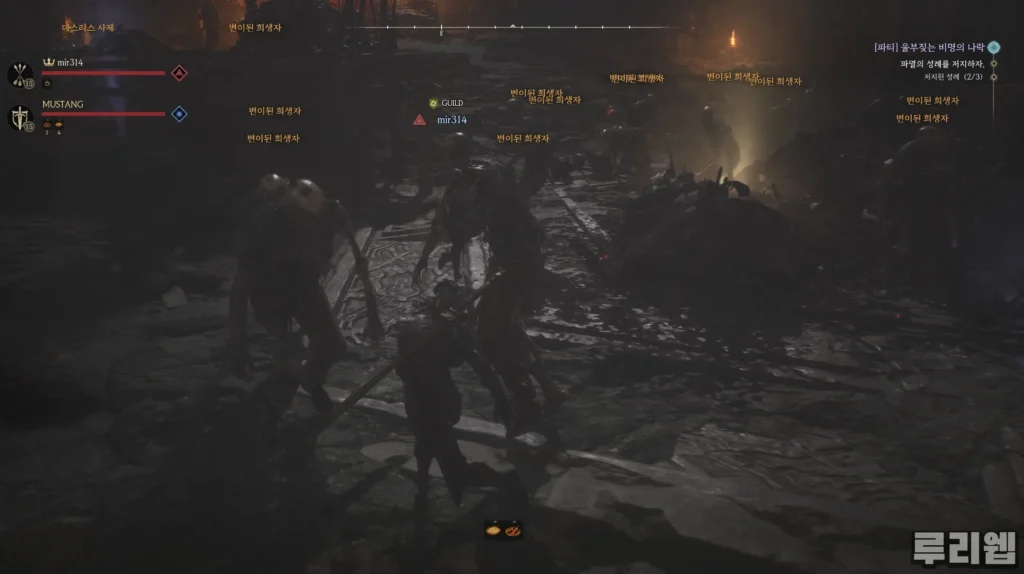
Another key combat feature in Chrono Odyssey is the “ChronoTact.” As mentioned earlier, this is the game’s core mechanic and sets it apart from other titles. Players earn a ChronoTact each time they defeat a boss, and according to testing, there are four bosses in the main storyline.
Of the ChronoTacts obtained by defeating these main story bosses, three prove especially useful in combat. Notable abilities include freezing time to halt a monster, rewinding the past 10 seconds, and summoning the spirit of the defeated boss.
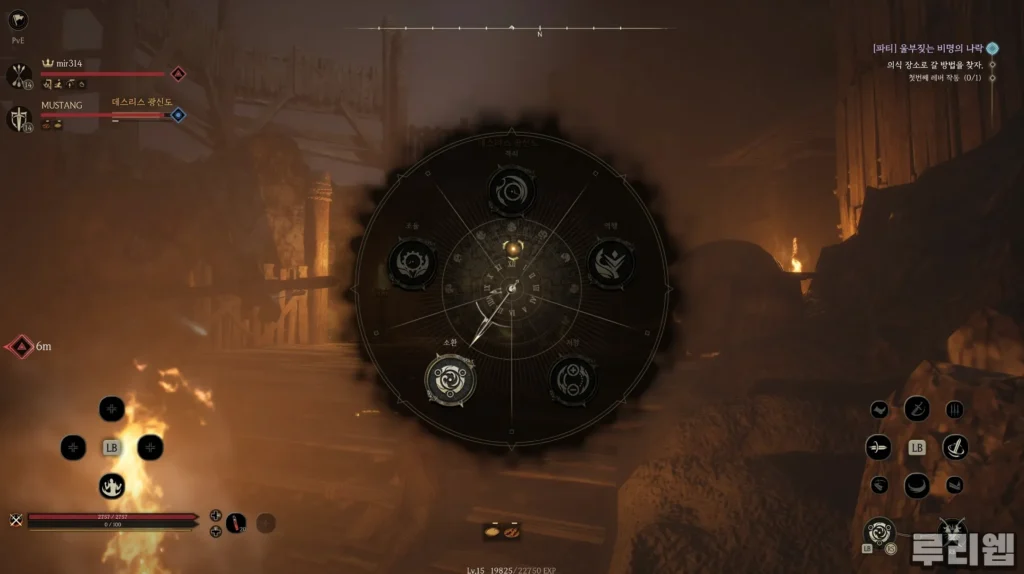
Among these abilities, the 10-second rewind and boss spirit summon functions work as intended. You can rewind your character’s health status back by 10 seconds, and instantly summon a spirit to assist you in battle. However, ChronoTact skills have long cooldowns—over 100 seconds—so they must be used strategically.
While the concept is clearly reflected in the combat system, its implementation in the MMO environment sometimes leads to glitch-like situations based on testing standards. Rewinding time or summoning a spirit generally pose no major issues, but the time-freezing ability creates a strange and frustrating experience.
Regarding the time-freeze skill, it’s similar to mechanics introduced in other action-adventure games: monsters around the player stop moving and freeze for a set duration, during which the player can freely attack or act.
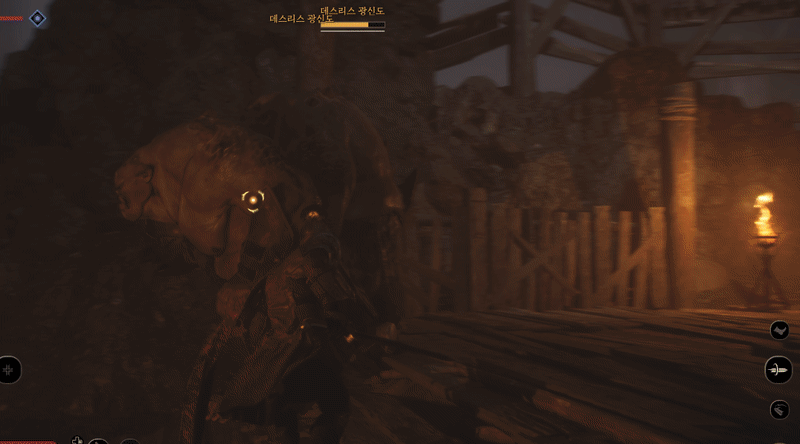
The problem lies in the operation method and the structure of the multiplayer mode, which feel somewhat awkward. Firstly, this time-freeze function does not work on bosses. Even when activated, it has no effect on them—only a brief cooldown is triggered. Although the cooldown isn’t long, the boss continues moving even when the activation button is pressed. This ability is limited to named mini-monsters and only works properly when regular monsters are nearby. If there are no freezable monsters around, the skill simply won’t activate.
Here, we need to consider how the time-freeze function operates. The question is: how does the game handle freezing nearby enemies’ time within an MMO’s persistent multiplayer environment? My personal guess is that the developers isolate players on different layers or handle the effect discreetly the moment the skill is activated. You can see the visual effect on screen briefly, while the unfrozen boss temporarily disappears.
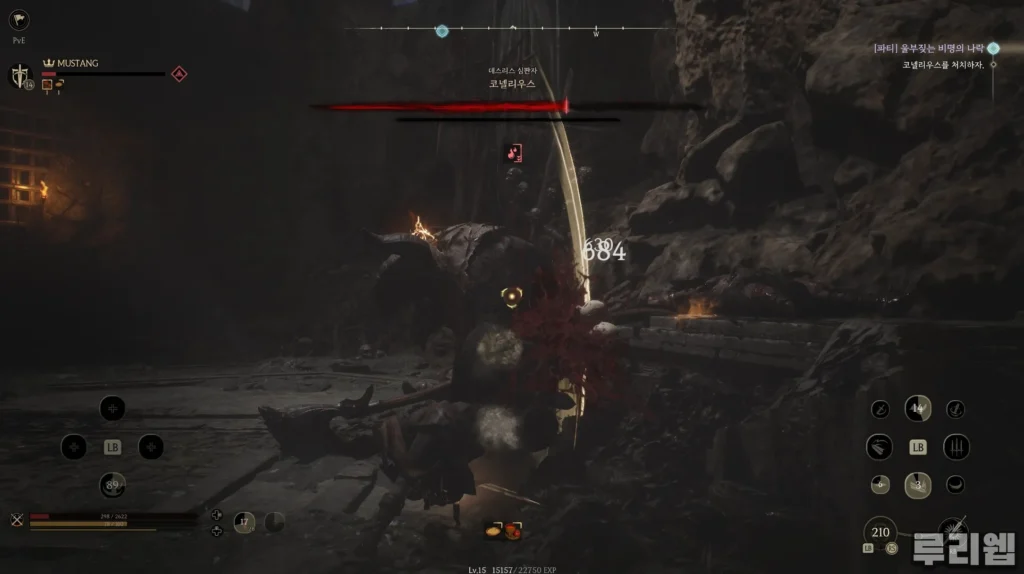
There are also reasons to believe it’s not simply a visual glitch. For example, what happens if a regular monster is summoned during a boss fight and the time-freeze function is activated? Enemies not frozen in time briefly disappear from the screen, leaving only those affected by the freeze visible. Since the boss isn’t frozen, it “loses its target and restores its health to the original state.” In other words, it can be inferred that the frozen time phase and the normal phase exist as separate instances.
I believe the same applies to group play in dungeons. Based on other players’ experiences, frozen enemies are handled by being stopped, not acting, or momentarily disappearing. I couldn’t confirm this firsthand since I didn’t see others using the skill, but it seems plausible—especially since some field missions can suddenly shift players to a different phase.
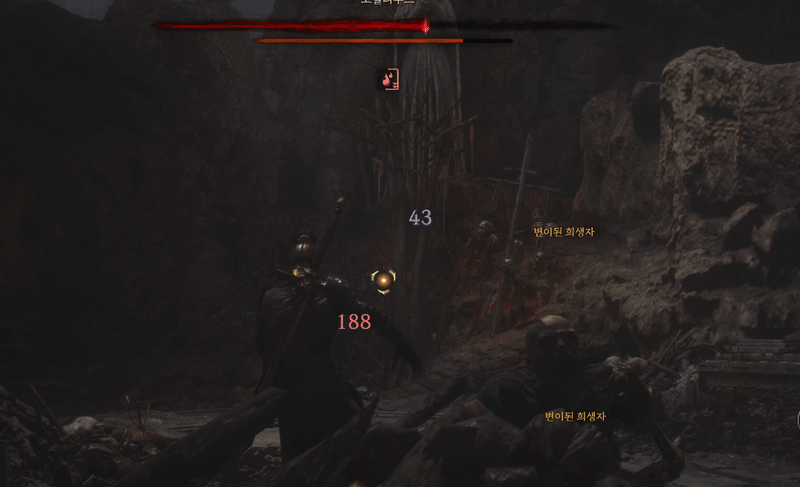
However, when the temporary freeze ends, seeing the spirits summoned by other players appear briefly suggests that each player’s time-freeze effect might be treated as a separate phase in the multiplayer environment. If this were a bug or an intentional limitation, it would be understandable—but if it’s an unavoidable technical solution, that’s a different matter.
Personally, I believe the latter is more likely. Since bosses aren’t frozen during the time-freeze, this mechanic feels like an ambitious but half-baked feature. Given that the game encourages players to team up against powerful monsters, the technical structure of momentarily separating phases could cause bosses to disappear from the battlefield if they were frozen.
Otherwise, there’s no clear reason to disable one of the game’s core mechanics in boss fights. Of course, if many players took turns using the time-freeze, it would make bosses too easy to trap. That’s why I hope it’s just a bug. (Now that I think about it, the presence of trash mobs in boss fights might have been a mistake in the first place.)
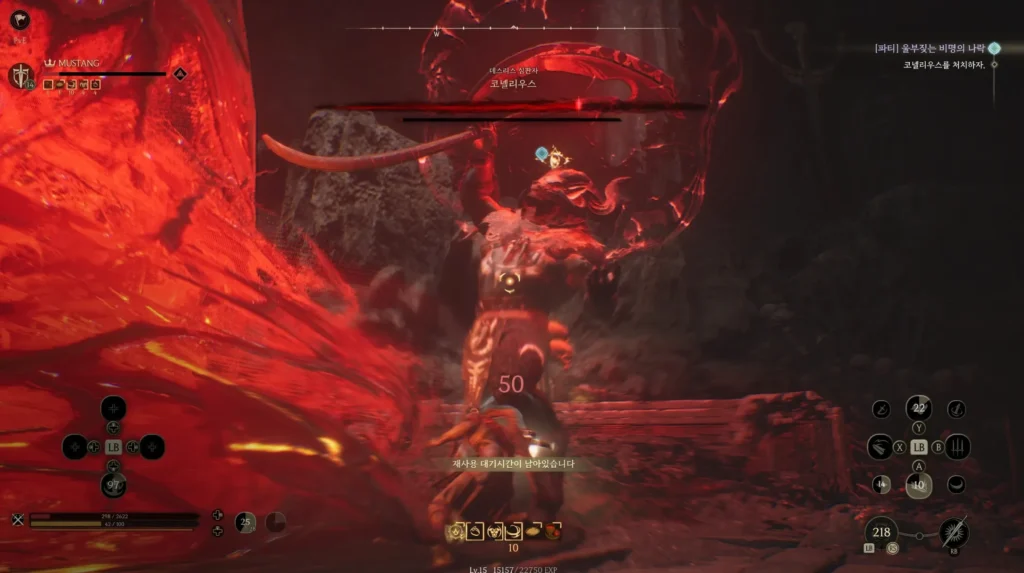
But the MMO Background: Irrationality, Level Design Flaws, and Growth-Related Issues
As mentioned earlier, Chrono Odyssey embraces the core values of Souls-style combat—intense, challenging battles. However, its framework is that of an MMORPG. It’s not a solo session but a genre where you share a vast world with other players. This creates some unexpected problems. Here are a few examples from real gameplay experiences:
- You encounter a powerful monster while progressing through a mission.
- The monster is guarding the mission objective.
- You first clear out nearby monsters so they don’t respawn during the fight.
- You engage the powerful named monster.
- Previously defeated monsters respawn during the battle.
This shows the two goals of Chrono Odyssey don’t align perfectly. In MMORPGs, monsters must continuously respawn because the battlefield is shared, but this game features long, drawn-out fights. As a result, monsters defeated during battle sometimes respawn. Monsters even fight each other, but this doesn’t help much. Since players have to kill them all anyway, fatigue doesn’t lessen—it actually increases.
One might argue that if other players were present doing the same missions, this wouldn’t be an issue. But designing content assuming players will always be present in every online scenario inevitably leads to problems.
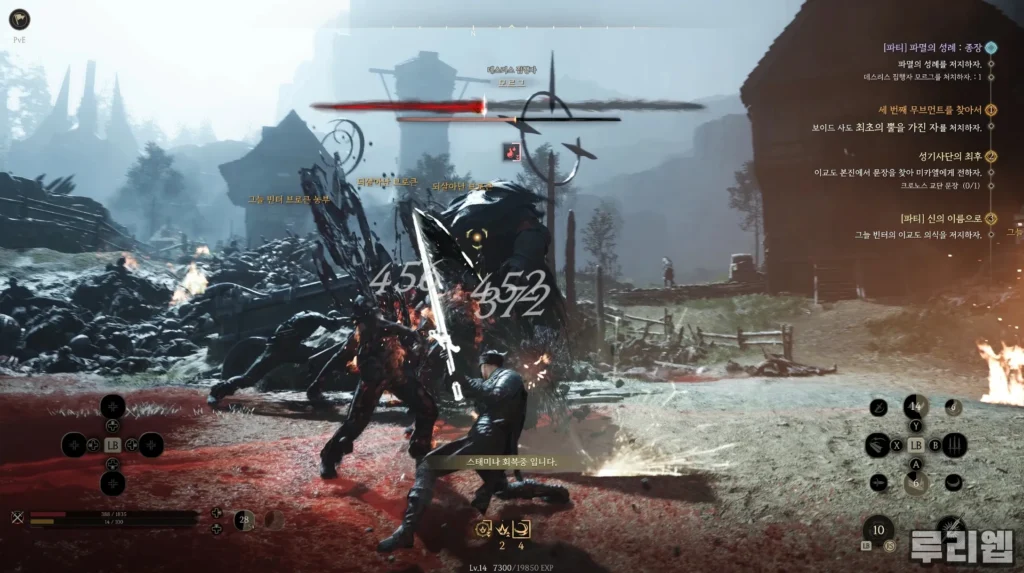
Basically, world bosses have health pools designed for cooperative play.
The lack of proper level design is another issue that needs to be addressed. If, somehow, you manage to finish the battle against the first Apostle and prepare for the next journey, players will start losing direction on how to proceed. This happens because Chrono Odyssey doesn’t guide players through missions and is designed around exploration with an emphasis on active adventure.
As a result, the game’s progression—where growth happens gradually, players fight bosses, and enjoy the process—is not well established. Despite adopting Souls-like combat mechanics, there’s almost nothing to gain from defeat and repeated attempts. Literally, losing only means using your own potions or spending money on repairs. The only real benefit is the satisfaction of wielding your weapon in the boss fight.
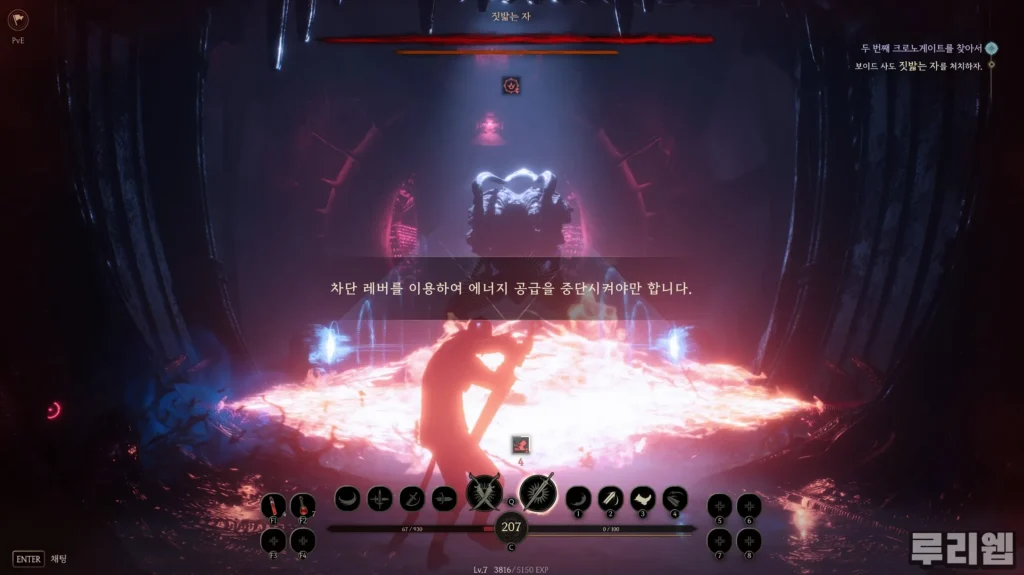
There are also story bosses that progress outside of battles. The structure involves activating a lever, dealing damage, and then returning to the entrance.
Ultimately, there’s no proper guidance on how to overcome obstacles when you hit a wall. This is something players must figure out on their own. However, progression doesn’t happen gradually; instead, it follows a step-by-step structure through completing various types of content.
Even this step-by-step approach feels like a high barrier. According to testing criteria, the way to overcome these stages is simple: level up and use higher-tier gear. Yet, this is another unusual level design choice that acts as a gate.
The skill value that increases as characters level up in Chrono Odyssey is minimal. In the end, what really matters is the level of the gear you use. Gear usage is restricted by levels—1, 5, 15, 25, and 40. In this test, only gear from levels 1 to 15 was usable.
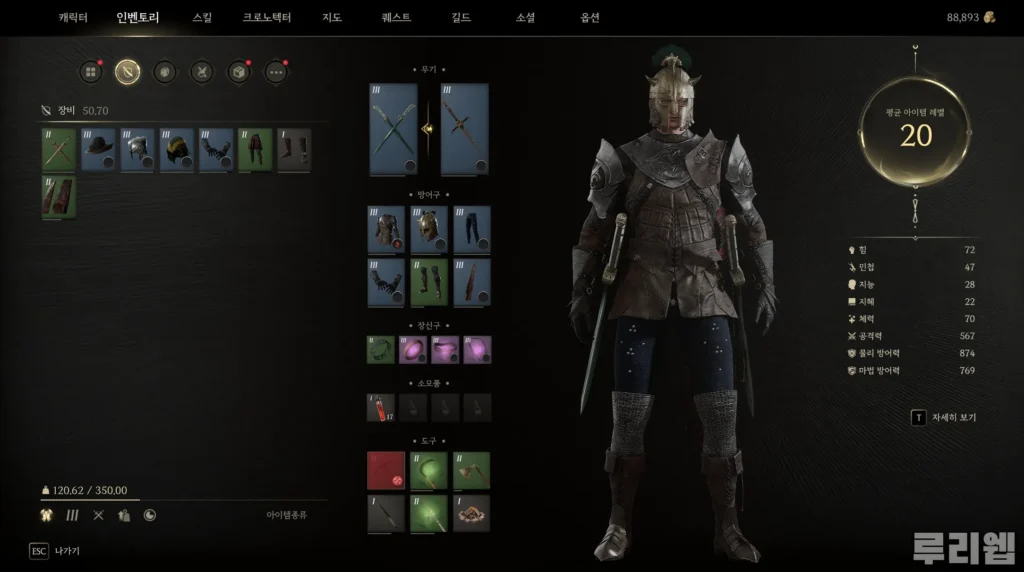
After progressing to a certain point, starting around level 15, the average gear level suddenly jumps from about 10 to around 20.
In other words, players need to grow from level 5 to 15 by filling this 10-level gap with other content that includes leveling up. Here, growth doesn’t primarily come from local quests or sudden missions. Except for a few quests, gear is mostly rewarded. So, what should players do? The answer largely comes down to gathering and crafting gear, bounty hunting, repeated grinding, upgrading, and small rewards through field items.
The most efficient and straightforward method here is crafting gear. Before the test, developers stated that “you can reach max level through gathering and crafting,” but in reality, all characters are funneled into gathering or crafting. Gear obtained from quests and field content isn’t guaranteed to perform well, so it doesn’t ensure player growth. Ultimately, direct progression is achieved through crafting.
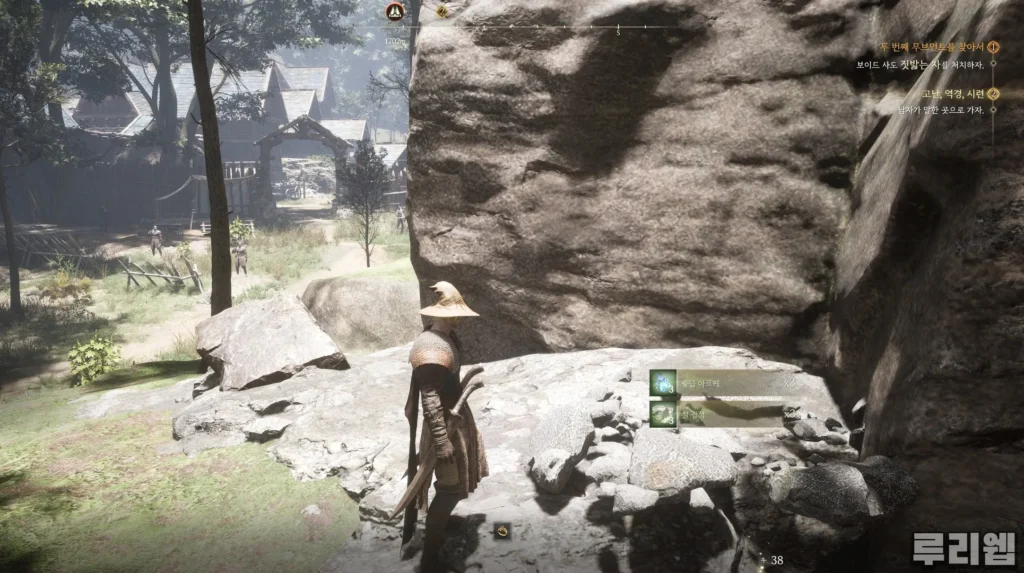
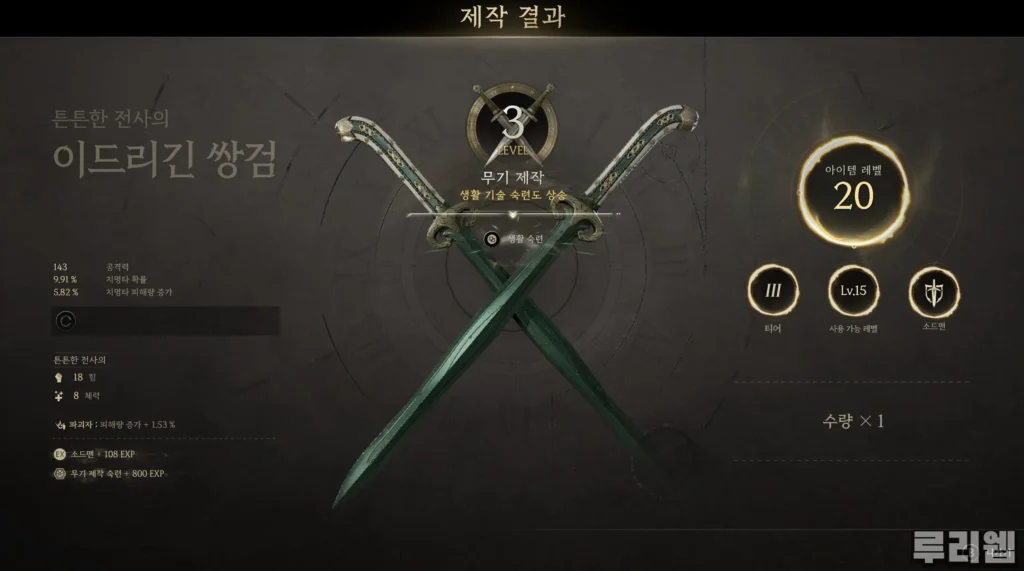
This represents an extreme form of progression that happens almost instantly, since players craft items in advance and then equip them.
If there had been mid-level gear around level 10 that could be used between levels 5 and 15, this issue would have naturally resolved itself—but that’s not the case. The likely reason for the absence of gear in this range is that the developers aimed to encourage gear progression through upgrades. They allowed players to upgrade each piece of equipment but emphasized the need to secure the missing value through these enhancements. The problem is, this forces players to spend time outside of actual combat.
The progression flow follows this cycle: “gather upgrade resources by completing open-world exploration content, enhance your gear, level up, significantly strengthen yourself with higher-level gear at a certain point, and then easily defeat previously unreachable bosses.” However, the difficulty lies in the first step—completing open-world exploration content—which neither creates nor guides a clear path for players. Without understanding this flow, players might end up using level 5 gear all the way through level 14 without any upgrades.
Guiding players toward open-world exploration content requires advanced level design to make it accessible and enjoyable. This might be the key to how naturally players can discover and engage with intermediate content using terrain and items. Currently, Chrono Odyssey’s open-world level design leaves much to be desired in this regard.
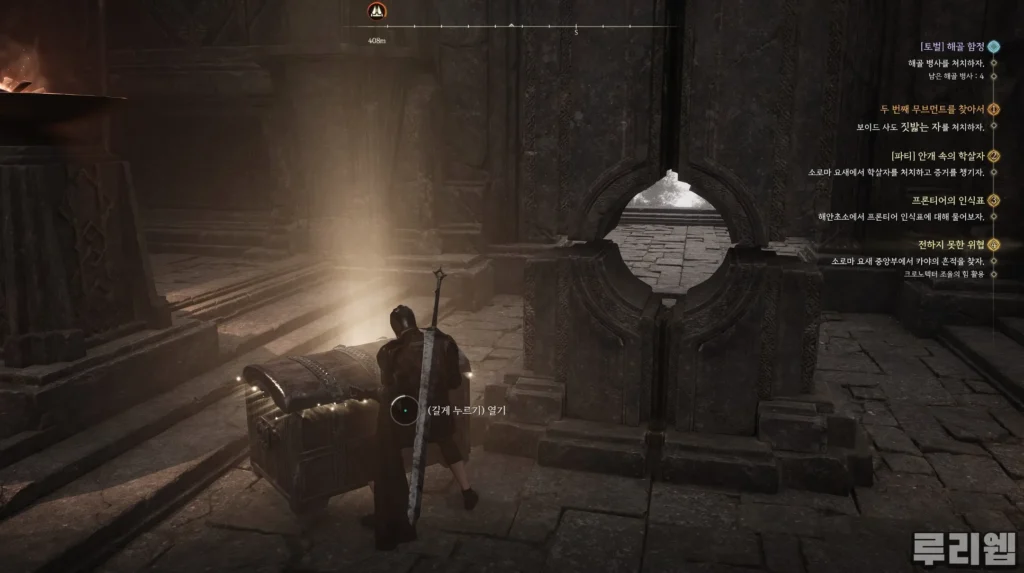
Although the chests are placed throughout the world, there is a lack of meaningful rewards or incentives.
There are very few elements that encourage natural discovery. The most notable examples are monster camps where surprise quests take place, and individual dungeons that glow in the distance. Instead of guiding the player organically through the terrain, the content is designed so that players find it either through visual cues or by forcibly adding it to their quest list.
This doesn’t create natural progression by sparking curiosity or interest. Rather, players stumble upon it by chance or approach rudimentary content as part of their leveling process. In other words, it’s not something that makes you wonder, “What is that?” but content sought purely for progression. Even when you find a small personal dungeon like this, it often requires an average gear level that’s not easy to reach.
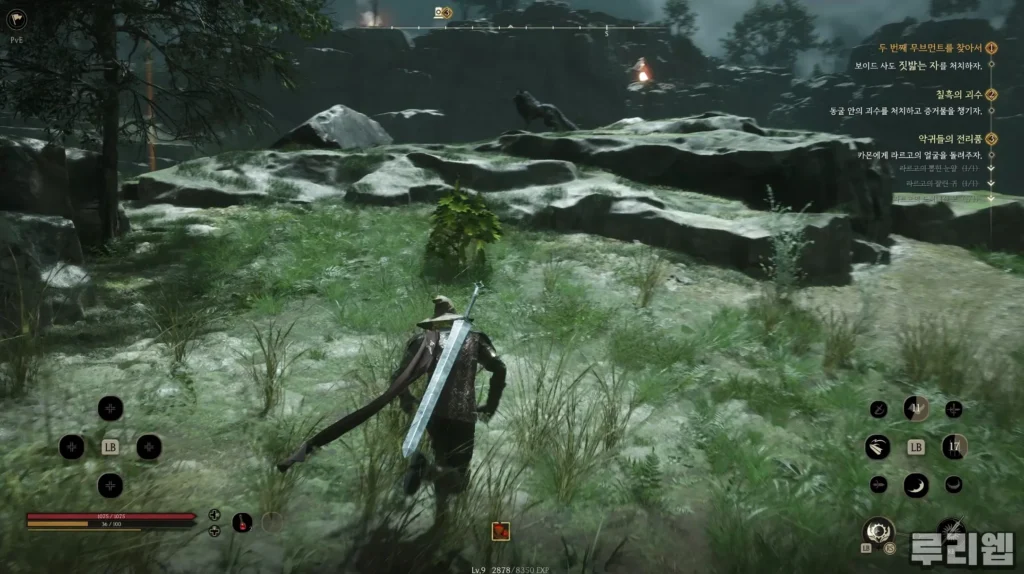
In terms of level design, these elements act like lights shining in the distance, drawing the player’s attention.
The rewards from the most common repeatable quests are neither significant nor directly tied to character progression. The most meaningful content is connected to rewards earned by defeating specific monsters and increasing the bounty hunter rank. This allows players to obtain materials that can be exchanged for crafting resources, while skill upgrades serve as key factors driving progression.
On the other hand, regarding reinforcement materials, dungeons unlocked as you advance the story also drop a substantial amount. Although I couldn’t reach the final boss due to a bug, I managed to collect over 30 reinforcement materials for level 15 gear just by exploring. Unlike the early stage where I lacked materials to upgrade a level 5 weapon, it was only near the end of the test that I finally breathed a sigh of relief.
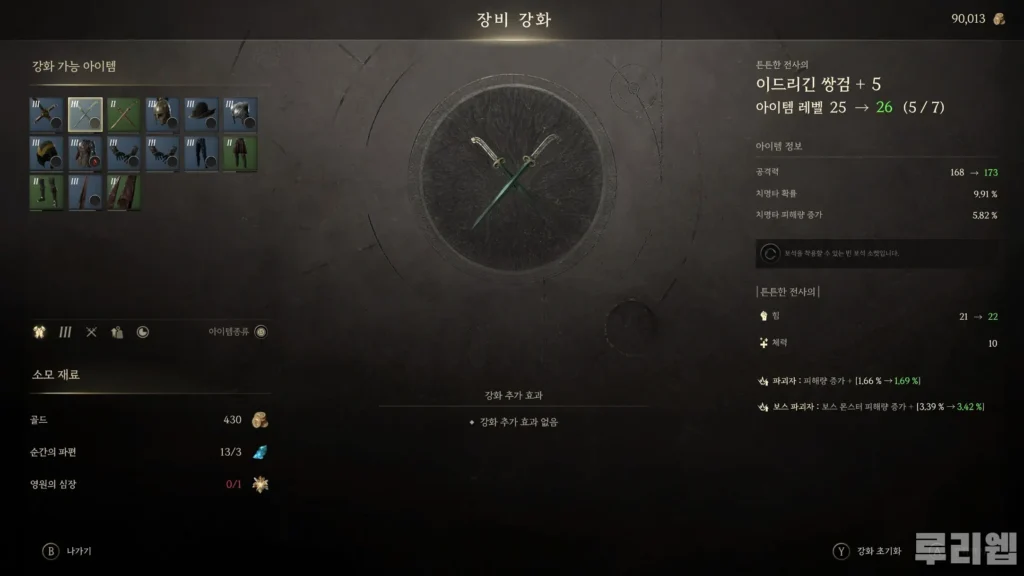
It seems that the mid-stage progression mainly occurs in the time-limited dungeon played with a group, but it can be difficult to clear. Considering the process of gathering members with similar growth, the fatigue caused by the boss battle inside, and the time and resource consumption during the conquest, this process can become a burden separate from the fun of gameplay. Since the condition to reach level 15 depends on obtaining and crafting exclusive resources from that time-limited dungeon, all large-scale game content unfolds after level 15.
In the end, the only thing that really makes sense is “crafting level 15 gear.” During leveling, key resources are gathered in advance to produce this gear, and once level 15 is reached, the average item level rises significantly. From that point, bosses become extremely easy to handle because damage and defense far exceed level values. Thus, story bosses turn into encounters focused more on dealing damage quickly rather than dense, challenging battles.
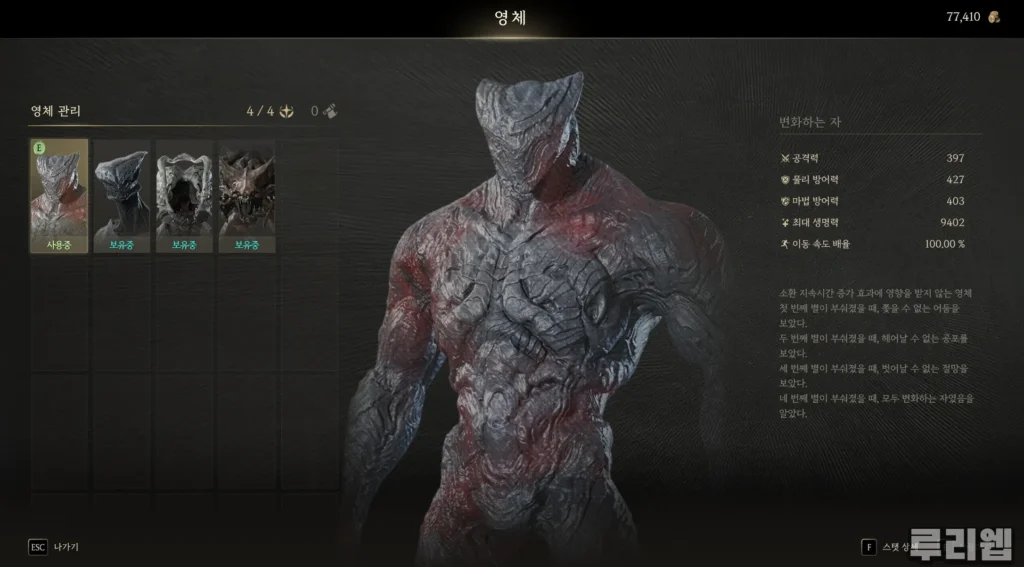
Story bosses can be summoned as spirits after being defeated.
Regarding level design, there is a clear intention to showcase a special atmosphere during major boss battles or mission progress. However, the lack of proper player growth management and an appropriate level design results in poor gameplay flow. While the personal dungeons found in the mid-stage have decent structure and completion, there is no clear methodology to properly manage or incentivize them. It would have been much easier if nearby markers had been placed, but that is not possible due to the game’s concept.
Specifically, finding an effective way to level up gear is challenging. In the end, since there are no good alternatives, the solution relies on forced leveling through repeated hunting, gathering, and crafting. The only hope seems to be the content called “Vault,” which was not accessible during the test, so it’s unknown whether it will serve as a mid-stage progression step. These solutions are expected to be clarified in future updates.


Others: technical methods for handling lighting and shadows / Poor graphics under certain settings / Errors that block progress
Other aspects include elements that caused “serious” inconveniences during the event test. While this may vary based on personal standards, I want to emphasize that these are truly serious issues. The term “serious” here refers to issues that go beyond a simple inconvenience and border on structural irrationality within the game. It’s not just optimization or technical shortcomings, but parts that the developers have not properly managed or are overly fixated on a conceptual idea.
In this regard, the first point I want to highlight is that “the consistency of visual tones causes inconveniences.” The overall atmosphere of Chrono Odyssey is dark, with a foggy impression prevailing. Many areas are covered in mist, and the locations where the main bosses (Apostles) of the main mission appear are dark places. The developers use these dark and heavy images as the primary visuals representing the work.

The intention is clear. With this, they managed to create overwhelming visuals and a strange atmosphere. However, on the other hand, these visuals are inconsistent and sometimes cause inconveniences during gameplay. The dungeon gameplay clearly demonstrates this. The group dungeon you will encounter in the test is designed with excellent rewards and challenging content that stimulates your interest. As mentioned earlier, the field gameplay lag is also good, so the experience of completing the dungeon focused on battles is emphasized.
However, it is too dark. This can be noticed even in the tutorial, but the problem is that, according to the basic settings, “you cannot see well what is in front of you if there is no light source.” I would like to give an example of a dungeon I experienced. In this dungeon, there are areas where there is no light in some sections. Here, total darkness persists. The problem is not just a mannerism, but it is really not visible to the player’s eyes.
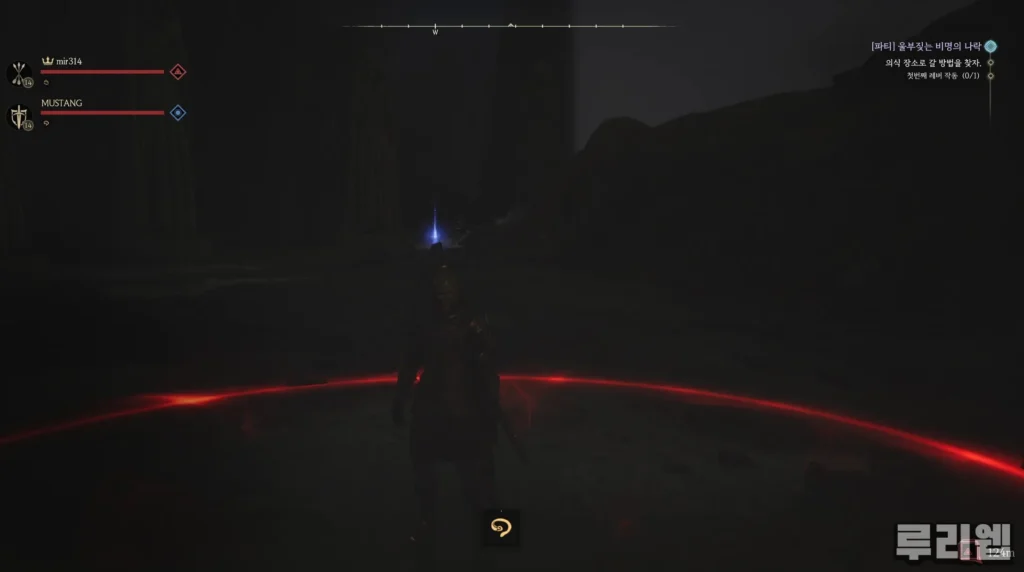
In this section, the only things visible are enemy nameplates, my character’s location, and attack effects from enemies and allies. Meanwhile, enemies roam around, and there is a trap that shoots arrows into the area from somewhere. The player must deactivate the objects that shoot arrows in the darkness and eliminate the wandering enemies. As can be seen in the screenshot below, nothing else is visible.
You can turn on the light, but it’s not easy. First, you have to fight the wandering enemies in the darkness and stay away from the area where arrows fly toward you at any moment. The problem is that it’s difficult to know where the arrows are being shot in the dark. When the ranged attack effect is triggered, a red light illuminates on the stone statue holding the bow, but keep in mind that this game fundamentally focuses on intense battles like those in Souls.

During intense battles, each one is so fierce that it’s unnatural for your eyes to focus on the effects of surrounding objects. This is understandable, as the battles are not easy. After wandering around, you find a lever beneath a statue and activate it just in case to disable the trap.
The process where the player actively discovers and explores these effects feels largely artificial and forced. Even if you can secure a field of vision by lighting fires around you, it’s not easy in a combat-focused intense game. There are even three of these objects in the section. The excitement that arises from solving this is not an epiphany, a “Wow!”, but rather a sense of emptiness mixed with frustration, like “Ah… was that all?”.
At this point, someone might say, “So, why not just increase the brightness inside the dungeon?” If you increase the brightness through the system settings, it becomes easier to complete the dungeon, but on the other hand, you have to readjust it once you leave. This cumbersome task itself is the problem. If you max out the brightness to play inside the dungeon, the visuals outside will be so bright they strain your eyes.
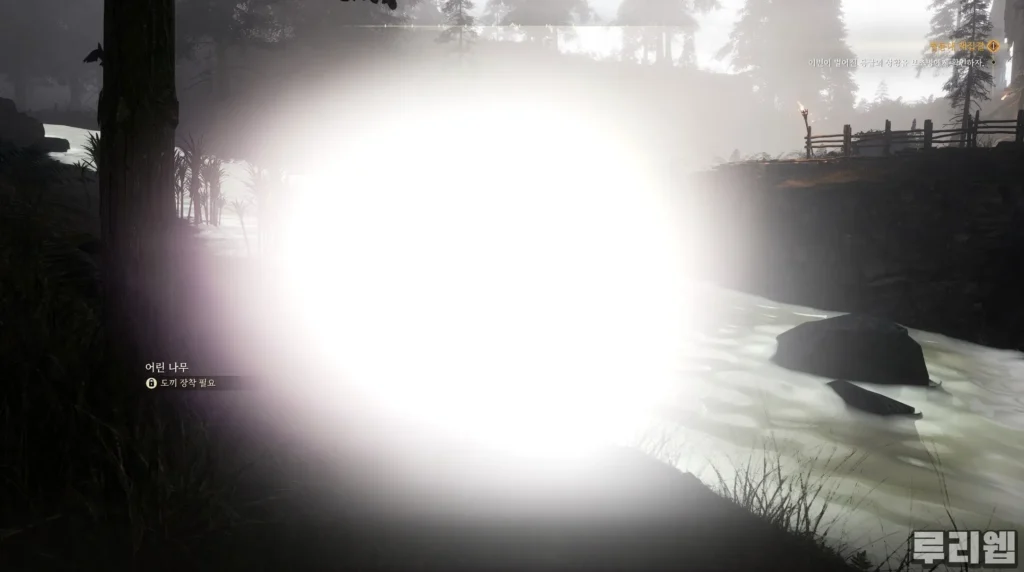
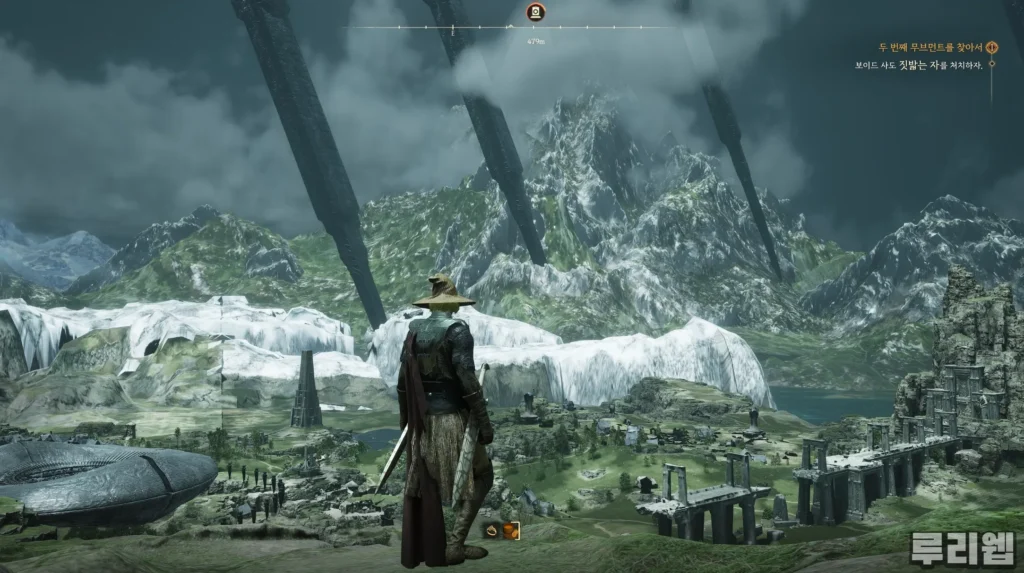
When adjusting it because it’s dark, I get hit by a flash grenade like this. The overall tone of the scene changes.
This also means you have to adjust the settings one by one for each dungeon or field. The amount of light itself is not consistent and varies by region to the point of causing discomfort. This isn’t a matter of right or wrong, but rather a clear flaw or unnecessary stress point.
And all the problems caused by darkness don’t easily occur under the “Epic” graphics setting. This is because the game’s visual quality drastically decreases when setting the graphics to a lower level. It will vary depending on your PC environment, but if you adjust the graphics options, you’ll notice the visual quality significantly drops and the consistency of lighting, etc., disappears at some point. If you play the upcoming test, keep an eye on this issue.
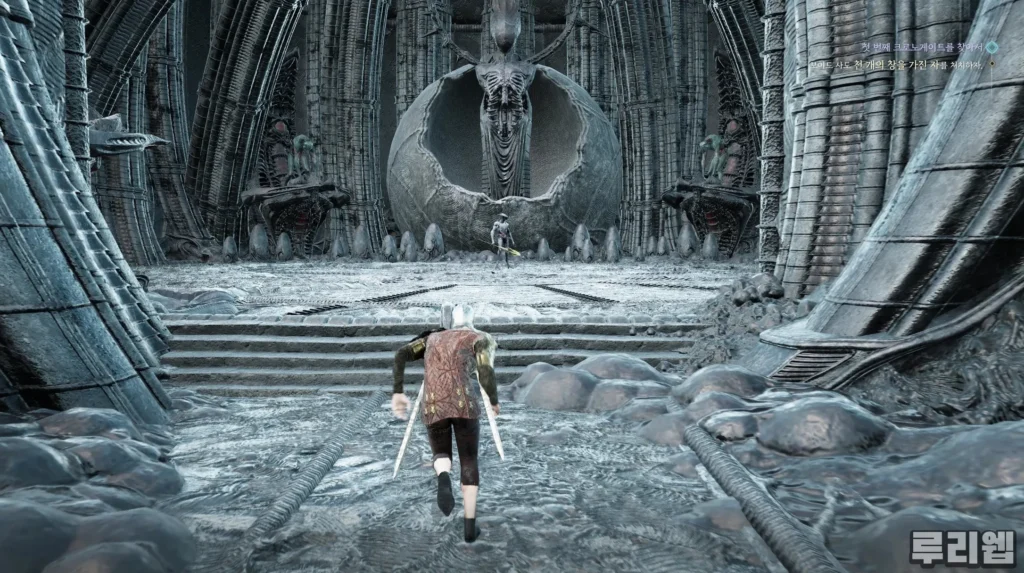

When you unify it to a higher “Epic” option level, the atmosphere changes… Just one level difference in settings turns it into a different game.
There are still some progress-related bugs. They might be fixed during testing, but I want to note them for now. You can see puzzles or progression methods that require you to lie down after sitting during quests, but in some sections, lying down is impossible due to bugs. In quests, lying down is explained through pop-up information, but you can’t proceed.
In the dungeon, you have to lie down and crawl under a half-open door, but it was confirmed that something was blocking you and you couldn’t get through. As a result, you couldn’t advance and had to abandon the dungeon halfway. Since it’s a simple bug, I think it will likely be fixed in later tests.
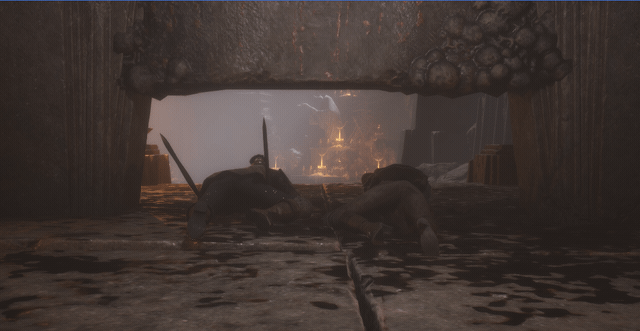
Move, move… Besides the dungeons, there are also quests that don’t progress because of this.
Hard + Hard Almost Result, Chrono Odyssey
The direction of Chrono Odyssey is clear. It is based on maintaining the tension of Souls-style combat while adding cooperation with others, which is typical of MMORPGs. And the decision to mix in action-adventure gameplay set in a vast world. It was a large-scale plan, and at least looking at this plan alone, it might not have looked bad. In fact, it works to some extent as the developers intended.
However, reality was different. It started with the intention of mixing fun + fun, but what does it take to make it fun? What elements need to come first? What are the designs, like level designs, that make up each element? It didn’t have the necessary components to combine the gameplay of the two genres into one. The points that should have been considered when combining these two difficult genres are missing.

So the result is not a combination of fun + fun, but rather a combination of hard to do + hard to play that creates synergy. The tense combat becomes somewhat sluggish in gameplay and in the judgment/combat mechanics that do not work properly in a communication environment. The tense battle only leaves behind a series of somewhat unreasonable judgments or awkward action compositions and the fatigue that comes from them.
In terms of MMO, it is starting to establish itself as an MMO that uses level designs that are incomprehensible or difficult to find. It is likely to be recognized as a title where you cannot continue with the initial quests unless you overcome the boss battle. (Even that requires overcoming the strangeness of the judgment.) Furthermore, the lack of path connections or story links in the field does not properly guide the player’s actions or experiences.
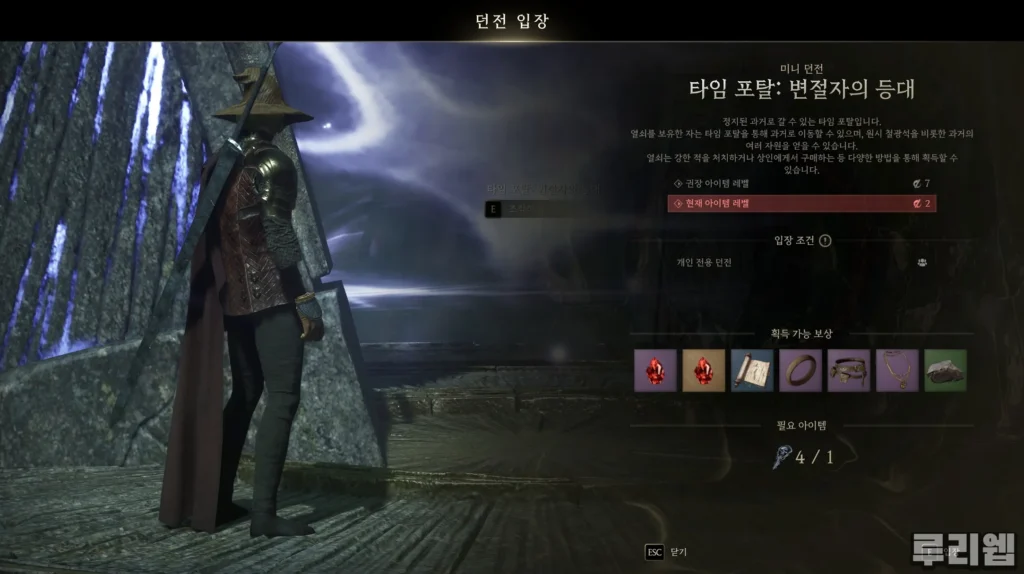
To encourage players to explore actively, we decided to reduce the number of specific landmarks or markers and replace them with events that occur suddenly. This aspect is certainly interesting, but more specifically, it does not answer the question, “Why should I do this?” You simply do it because it happens along the way, and even so, the battles are difficult and potions are hard to come by, so often it’s better to just pass by.
This seems to stem from the goal of actively progressing through quests and exploration, but there’s no thought given to “How to convey that?” In actual gameplay, it is difficult to perceive any methodology guiding the player’s gaze or path, except for landmarks that reveal areas or allow teleportation. Considering the vast experience in level design applied to immerse players in open-world titles to date, this is infinitely lacking.
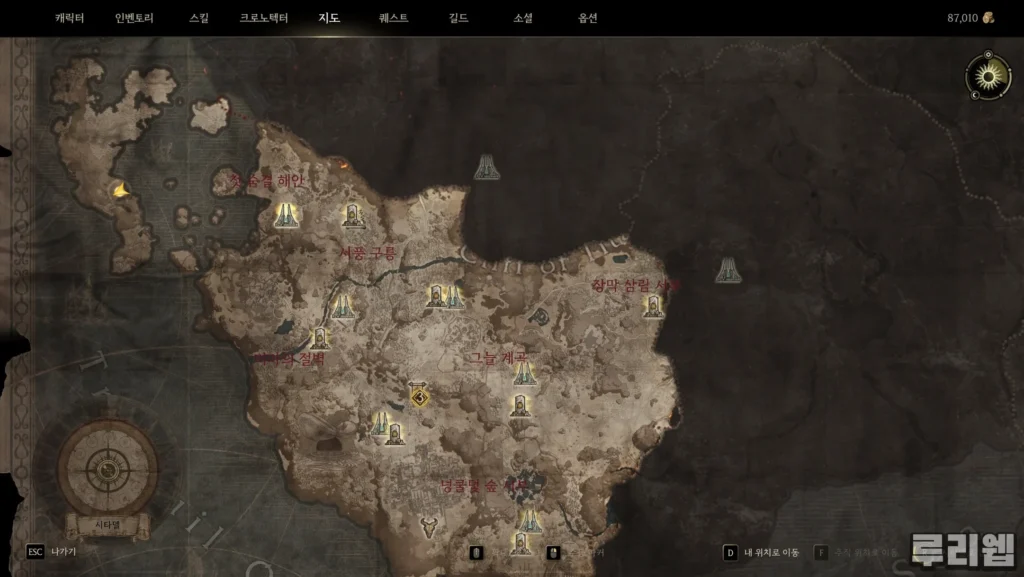
The areas you can visit during the test are roughly like this.
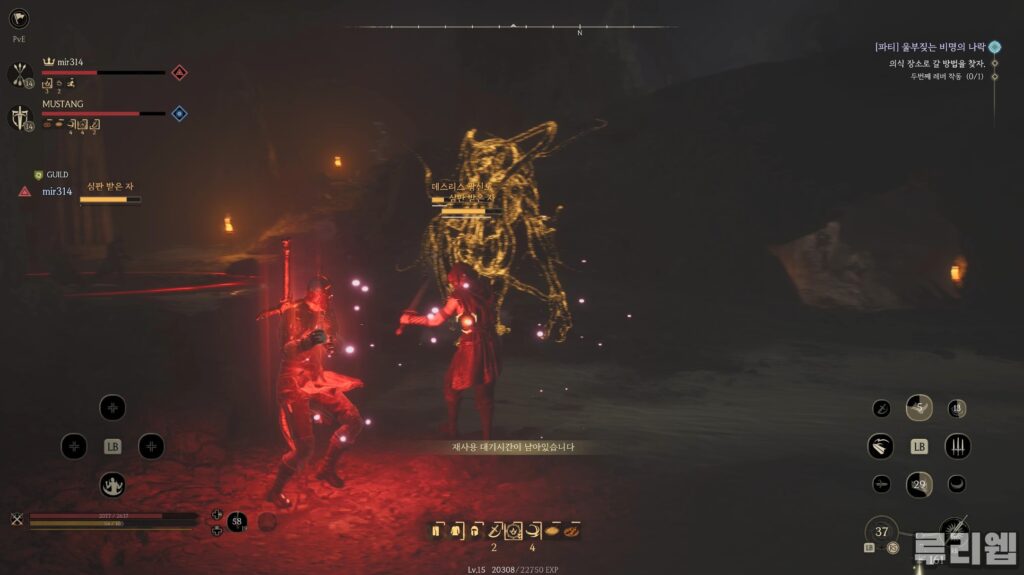
Chrono Odyssey will probably receive a lot of feedback during this test. There may be people who genuinely enjoy this type of game. I believe there will be both positive and negative reviews regarding the content flow and overall design. That’s why we should take advantage of this test to reexamine the gameplay and make adjustments based on the feedback.
Aside from occasional bugs, the content flow and circulation structure are well organized, and this is even more so. Now, it’s just a matter of deciding how much feedback we will consider while maintaining this structure, or whether we will choose to modify it. Since the service is scheduled for the fourth quarter, I hope we make good use of this opportunity to test gameplay in advance and that it proves useful.



